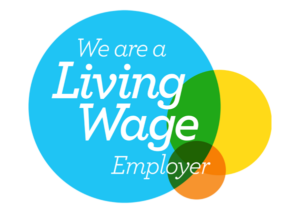Dean Horton - Head of Sales & Marketing
dean.horton@nuttall.co.uk - Fashion - February 17 2022.
Conscientious consumerism is on the rise. Partly thanks to the legacy of Covid, giving us pause to consider the impacts of our collective consumption habits on our environment – and partly due to rising media focus, including last year’s COP 26 summit.
Sustainability ranges hit the mainstream
Fashion retailers in particular are beginning to pick up the gauntlet in earnest in revising their practice. H&M, John Lewis and M&S are all leading the charge on the sustainability creds of their ranges in 2022. Even ASOS has a sustainability story to tell!
But in truth, the business model that underpins fashion (and fast-fashion in particular) is not particularly green. Affordability and speed are both key drivers – forcing an ethical and environmental pressure that sits at the heart of an industry that has to raise its hand as a culprit in perpetuating over-consumption culture.
Delivering on eco-creds is challenging
The issues are explained in a McKinsey report that suggests globally we are consuming upward of 100 billion clothing items each year. And textiles are claimed to the 2nd most polluting industry in the world producing 92 million tonnes of waste annually. And the problems don’t stop there.
A report by Stand.earth – an environmental agency, explains that only two major brands are delivering on their commitments to reduce emissions, American Eagle and Levi Strauss. These two came out on top of the recent report card.
So where can fashion retailers focus in order to improve their sustainability credentials?
Looking beyond the garments to the sales environment
Sourcing sustainable materials and improving supply chain practises will be crucial, if fashion leaders are to improve the footprint of their businesses.
But here at Nuttall, we believe that sustainable sourcing can go way beyond the procurement of the garments and the materials that make them. Retailers can also look closely at how they furnish their estates to create environments that embody sound eco-conscious thinking that is evident to consumers.
We are able to look at the projects we complete on behalf of our customers through a powerful sustainability lens.
Innovative sourcing methods mean our teams can track down materials for everything from counter tops to floor covering that satisfy low carbon credentials. Whether it’s sustainably sourced timber, recycled plastics or low-energy light fittings – our team will work tirelessly to find components and substrates that tick boxes for our customers and their consumers. To see this approach in action, take a look at ASDA’s sustainability concept store in Middleton, Leeds.
Sourcing local is one way to go
But we can also play our part in reducing the footprint of retail fit-outs, thanks to local, UK based manufacturing capabilities. So equipment can be made ‘on-the-doorstep’ in global terms, in an environment where efficiency and low waste are always the order of the day. Going further still, we partner with those of our customers interested in contributing to the circular economy to refurb and refresh their environments where possible – to avoid both the costs and environmental impacts of all-new schemes. Take a look at work we’ve done for M&S and Morrison’s to see this approach in action.
In short, green is definitely the new black for fashion in 2022 and here at Nuttall we’re happy to help our customers nail their colours to the mast, in-store.

















